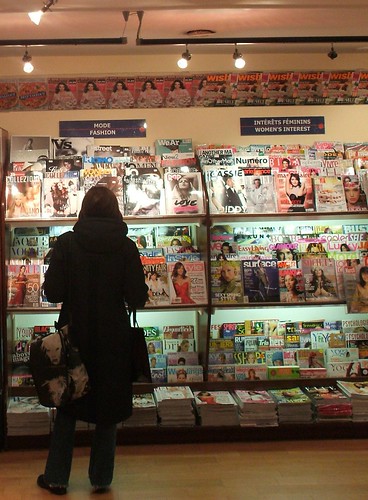 Want your alums to read more than class notes? Here's some advice from Swarthmore College's award-winning alumni magazine editor, Jeff Lott.
Want your alums to read more than class notes? Here's some advice from Swarthmore College's award-winning alumni magazine editor, Jeff Lott.Jeff chaired the CASE Annual Publications Conference in Pittsburgh this year. After seeing him in action during a fast-paced critique session he calls "Triple Play" I asked him to write this guest post.
From Jeff:
One of my favorite sessions at the conference was an America-Idol version of publications critiques in which a panel of three experts is given just three minutes to offer some cogent criticism of a publication submitted by a member of the “studio audience.”
The beauty of Triple Play is that your school’s piece is under the gun for just 180 seconds. In reality, you don’t have that much time to impress your actual audience before your publication is headed for the recycling bin. A lot of the publications we saw were magazines with three common problems.
Design Overload.
This is not a new criticism, but today’s designers have way too many tools at their fingertips—a hundred fonts, a thousand graphical elements, a million ways to layer more images, colors, and information onto a page. Some can’t resist what I call exponential design: “If something looks good, square it.” Cut it out! Readers of teen tabloids will pore over these kinds of pages. But your educated, college-graduate audience needs a break. Calm, quiet design coupled with cool, easy-to-comprehend editorial will give them a chance to think.
Editorial Hierarchy.
A number of magazines ignored the following reality: Almost no one reads your carefully written articles, no matter how good they are. Research shows that only 10 percent of readers make it past the first paragraph of your body copy. So how can you get your message across? Most of us are skimmers—it’s how we cope with the flood of information we’re bathed in every day. So, if you’re designing or editing a magazine, tell your story through the following hierarchy:
- Catchy headline with an active verb (avoid gerunds)
- Summary subhead that, if it’s the only thing readers take-away, tells the story
- Crunchy, fact-filled callouts that help fill in the details
- Captions that don’t just name who or what’s in the picture, but tell something about them or it
- Short, engaging sidebars, lists, and charts that provide additional entry points to the story
- Last and least—the story itself
Magazine Architecture.
Go to a good newsstand and buy 25 different consumer magazines—from The Atlantic to The Bark, from Smithsonian to People. It will cost you about a hundred bucks. Back at the office, pick them apart. What are the common organizational elements? You’ll find that there’s a standard architecture to great magazines, just as there is to great buildings. And if you deviate too much from the expectations of readers—the conventions set by the magazines that they actually pay to read—you do so at your peril. Whether you start reading a magazine from the back or the front, architecture matters. Too many institutional magazines ignore the defining details that make readers comfortable, risking the impression that your publication is not a “real” magazine. To be taken seriously, you must be real.
If you would like help with any of these concepts Jeff has kindly offered to receive questions via email at jeffrey.lott@gmail.com
Photo Credit

2 comments:
Do fact-filled call-outs come in a smooth texture or just crunchy?
:)
Nicely done, my friend.
The creamy callouts don't stick in your teeth (er, brain) as well as the crunchy ones. We put broken glass in ours.
Post a Comment